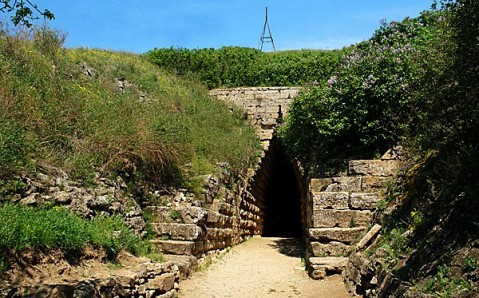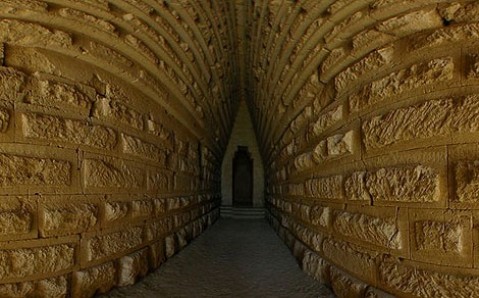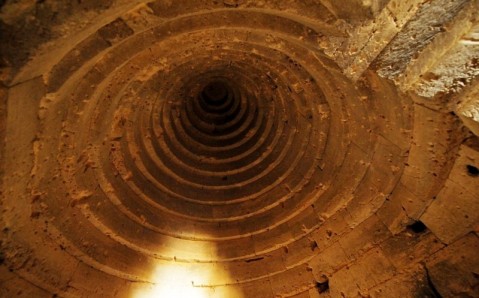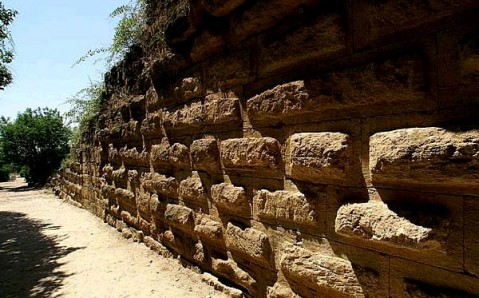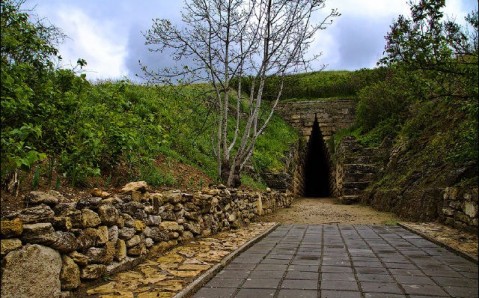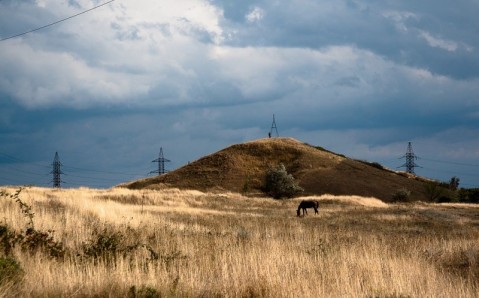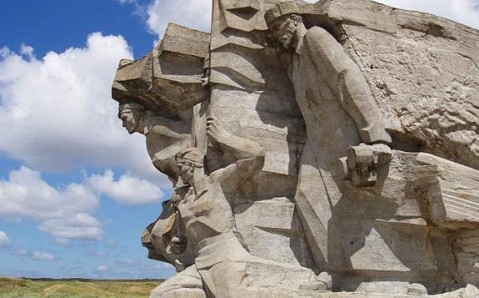Tsar's Burial Mound (Tsarskiy Kurghan)
settlement Adzhimushkay, Skifskaya St.
Price: 15 UAH. One-hour long excursion for a group up to 25 people costs 50 UAH (group's minimal size is 5 people)
Working hours: from 9 a.m. to 6 p.m., closed on Monday
Box office hours: с 9.00 до 15.15
The Kerch Peninsula was always famous for multitude of ancient burial mounds, however, the Tsar's Burial Mound rightly bears a title of one of the most mysterious and mind-boggling ones. This unique monument of burial architecture, built on the natural 18-meter (60 feet) high hill in the 4th century B.C., is considered to be the true masterpiece of antique architecture.
Amazing with its original perfect architectural forms, the Tsar's Burial Mound is the burial vault for one of Bosporian kings. Historians believe that Tsar Levkon I, under whom the Crimean Bosporus reached the peak of its power and economic prosperity, was buried here.
The burial mound strikes, in the first place, with its unusual construction, which was innovative for those times. Built from right-angled stone slabs, peculiar 37-meter long roofed corridor - dromos - leads to the burial room's entrance. Due to original construction, the corridor creates an interesting illusion: if you look down in it from the barrow's entrance, the way to the vault seems shorter and broader than if you look from inside. This illusion was attained through different breadth and non-parallelism of the dromos' walls. In this way the ancient builders wanted to show that the way to the after death world is short, but the way out seems very long. Others believe that burial mound's corridor symbolizes soul's transferring into the next world.
The burial room, to which the dromos leads, is quadratic and consists of ten stone walls' layers. On the fifth layer's level the walls' square gradually transforms into round vaulted dome, formed by twelve gradually diminishing concentric rings that are topped with a slab. Such architectural technique is unique for antique architecture.
The barrow wasn't discovered until the 19th century. By the time, when archeologists opened the vault, it was already empty: it was completely ransacked back in the ancient times and only the remnants of a wooden sarcophagus survived.
Today the lapidarius - the unique collection of antiques, including steles, sarcophaguses, and pedestals - may be seen near the Tsar's Burial Mound.
Getting here. Take a bus №4 from the city bus station to the bus stop 'Yagunova'.

 Crimea
Crimea
